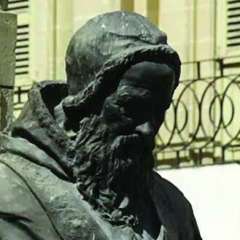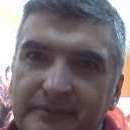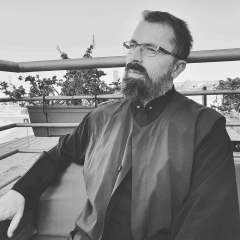Претражи Живе Речи Утехе
Showing results for tags 'new'.
Found 8 results
-
Xiaomi officially announced its newest Android skin — MIUI 12 — earlier this year in April. As with all previous MIUI releases, the latest software update from the Chinese OEM included a bunch of new static and live wallpapers. Shortly after the official announcement, XDA Recognized Contributor linuxct managed to port the new Super Earth and Mars live wallpapers to other devices and later added two more options — Hale crater and Evergreen garden — to the list. Xiaomi recently released another set of live wallpapers with its 10th-anniversary special Mi 10 Ultra and you can now download it for your device. The new MIUI 12 Super Saturn live wallpapers include two options — Faraway Rings (Horizontal) and Faraway Rings (Vertical) — both of which can now be installed on any Android device running Android 8.0 or newer. As you can see in the embedded tweets, the Faraway Rings (Horizontal) wallpaper gives you a close look at Saturn’s rings in a horizontal orientation, while the Faraway Rings (Vertical) wallpaper aligns the rings in a vertical orientation. Both the wallpapers show a zoomed out version of the ringed planet on the lockscreen and unlocking the device zooms into the rings, with floating asteroids that move when you switch pages. If you’re interested in trying out MIUI 12’s new Super Saturn live wallpapers on your device, you can download the respective APKs from the download link below. Once you have the APK installed on your device, you can pick the new live wallpapers from the stock wallpaper picker on your device. In case the wallpapers don’t show up in the stock wallpaper picker, you can download the Google Wallpaper app from the Play Store to apply the live wallpapers. Download MIUI 12 Super Saturn Wallpaper port MIUI 12 Super Wallpaper — XDA Forum Thread
-
Shumylo concludes that initial ordinations of the UAOC hierarchy were, unfortunately, conducted by an imposter without the Apostolic succession. On January 5-6, 2019, the official delegation of the Orthodox Church of Ukraine (OCU) at the ceremony of the Tomos bestowal at the Ecumenical Patriarchate in Istanbul included Metropolitan Andriy Abramchuk of Galicia who concelebrated with Patriarch Bartholomew and the other Phanar bishops. In 1990, the Metropolitan was ordained by the notorious Victor (Vikenty) Chekalin, a pedophile and swindler who now serves a sentence in Australian jail for document forgery and fraud. At the anniversary of the Tomos bestowal this year, Patriarch Bartholomew led a divine service together with the now former Primate of the Ukrainian Autocephalous Orthodox Church (UAOC, the one “restored” by Vikenty Chekalin) Makary Maletich. The latter was ordained by the hierarchs of the “Chekalin succession” – Dimitry Yarema, Ihor Isichenko and the former Ukrainian Orthodox Church-Kyivan Patriarchate (UOC-KP) bishop Methodius Kudryakov. Part of UAOC bishops who in 2018 joined the OCU also got to the “Chekalin succession” through priestly and episcopal consecrations from Andriy Abramchuk, Makary Maletich and others. Even within the OCU the attitude toward this succession is ambiguous. Taking into consideration the necessity of discussing the issue of Apostolic succession of this part of the OCU hierarchy, Serhii Shumylo, Director of the International Institute of the Athonite Legacy in Ukraine, presented his new report titled “The self-avowed “bishop” Vikenty Chekalin and his participation in the first UAOC ordinations in March of 1990”. With the blessing of Metropolitan Kallistos (Ware) of Diokleia this work was submitted to the Ecumenical Patriarch. The documents, evidence and facts presented in the study – including the ones from previously unknown archival sources – confirm that the first UAOC ordination on March 31, 1990 in Mikhailevychi village in Lviv Oblast was carried out by only two persons: Ioann Bodnarchuk, defrocked on November 13, 1989 because of his voluntary secession from the Russian Orthodox Church (ROC), and fraudster Victor Chekalin. Besides, according to the published certificate, this “ordination” was led by Chekalin, who has never been ordained not only as a bishop but even monk or priest. In his research, Shumylo also studies publications that appeared at the Ukrainian site Cerkvarium.org by Dmytro Horevoy and Greek sites Phanarion.blogspot.com and Romfea.gr in August-September 2019, which stated that the bishopric ordination of Vikenty Chekalin was authentic. Studying various versions of Chekalin’s admission to monastic vows and ordination, and attempting to understand the motives of the main parties, the historian compares the remembrance of Archbishop Eulogius Smirnov, Abbot of Danilov Monastery in Moscow, and archival documents and correspondence according to which, Chekalin wasn’t even ordained as a monk. Also compared are the testimonies by Ioann Bodnarchuk and Victor Chekalin of various periods concerning the latter’s bishopric ordination. Thus, Chekalin’s own testimony before the Russian Orthodox Church Outside Russia (ROCOR) Synod in July 1989 – January 1990 shows that Ioann Bodnarchuk didn’t take part in his ordination. The other two bishops who allegedly ordained Chekalin – Metropolitan Alexei Konoplev of Kalinin and Kashin and bishop of the Catacomb Church Vladimir Abramov – had already passed away by that moment and no confirmation of their participation in the ordination was found. As for the first UAOC ordination of 31 March 1990, it should be mentioned that the signature of Archbishop Varlaam (Ilyushchenko) of Simferopol and Crimea of the ROC was added to Vasyl Bodnarchuk’s Certificate of Ordination after the Archbishop’s death. According to the written testimonies of Archbishop Varlaam’s driver and archdeacon, the hierarch didn’t leave his diocese and held divine services in the Simferopol Cathedral on that day. Moreover, being a member of the ROC Synod, Varlaam personally signed the Moscow Synod’s resolution of November 14, 1989 on depriving Ioann Bodnarchuk of his episcopal rank, and “no way could secretly ordain new bishops with him four months later,” Shumylo writes. This situation, with archival documents signed by Ioann Bodnarchuk, was covered in detail in a piece by Fr. Rostislav Yarema (an English translation was published by the Orthodox Cognate PAGE). Thus, Shumylo concludes that initial ordinations of the UAOC hierarchy were, unfortunately, conducted by an imposter without the Apostolic succession. This was the violation of the first Apostolic Canon (“Let a bishop be ordained by two or three bishops”). The historian reminds that both Mstyslav Skrypnyk and Filaret Denisenko didn’t recognize the authenticity of the ordinations of the “Chekalin succession” hierarchs. However, many of those ordained this way were convinced in the legitimacy of their dignity and refused to be reordained, so the “Chekalin succession” still partly exists in the UAOC and UOC-KP. And in that status, many of the clergymen and hierarchs were accepted into communion by the Ecumenical Patriarchate. Considering that copies of the Certificate of Ordination and the evidence mentioned in the media were provided to the Phanar and could become a basis for the Patriarchate Synod to recognize in October 2018 the UAOC hierarchy in their “current dignity” without reordination, Serhii Shumylo expresses his concern about the Ecumenical Patriarchate taking decision on the grounds of bogus documents and advocates that a detailed study of this issue should be made. Historian Finds New Evidence to Prove Ukrainian Autocephalous Orthodox Church’s Initial Ordination was Illegitimate THEDURAN.COM Shumylo concludes that initial ordinations of the UAOC hierarchy were, unfortunately, conducted by an imposter without the Apostolic succession.
-

Greek Fathers on Petrine Texts of the New Testament
тема је објавио/ла Bernard у Dijalog sa braćom rimokatolicima
Greek Fathers on Petrine Texts of the New Testament The Greeks were consistently interpreting the 3 passages (Matt 16, John 21, Luke 22) as pertaining to Peter’s primacy, and via inheritance, the prerogative of Peter’s chair. Below is a Florilegium of Greek interpretation from the 5th to 9th centuries: St. +Cyril of Alexandria, writing in his commentary on the gospel according to St. Matthew (444), says, “that by the words ‘on this rock I shall build my church’, Christ makes Peter its Pastor, literally he places Peter over it as shepherd” – Ταύτης ποιμένα τόν Πέτρον έφίστησω (Patrologia Graeca 72, 423) St. + Gregory of Nyssa, spoke in a recorded sermon (395) saying that Peter is the head of the Church, “According to the privilege granted him by the Lord, Peter is that unbreakable and most solid rock upon which the Savior built His church” – ή άρραγής καί όχυρωτάτη πέτρα έφ ήν τήν Έκκλησίαν ό Σωτήρ ώκοδόμησε (Patrologia Graeca 46, 733) St. John Chrysostom taught that St. Peter was the “leader of the Apostles” in his 88th homily in St. John’s gospel (PG 59, 478), and even went further than this. In his 5th homily on “Penitence”, Chrysostom writes that after Peter had been restored to his former apostleship after committing the three-fold denial, he was also given “jurisdiction over the universal church” (PG 49, 308). Again, in his 8th discourse on the Jews, he writes on how the repentance of Peter wiped out his fault and , “he becomes again head of the Apostles and the whole world is committed to his care” (PG 48, 951) During the Monophysite fall out in the East, there were bishops who were strongly Chalcedonian, and thus, wished above all to retain the communion of the Apostolic See. A famous letter of appeal was written to Rome, and these Greeks openly declared the following about Pope Symmachus (512 AD): “…but for the precious salvation not only of the East, but of three parts almost of the inhabited world, redeemed, not with corruptible gold or silver, but with the precious blood of the Lamb of God, according to the doctrine of the blessed prince of the glorious Apostles, whose See Christ, the Good Shepherd, has entrusted to your blessedness….You have not only received the power of binding, but also that of loosing, in accordance with the example of the Master, those who long have been in bonds, nor only the power of uprooting and of destroying, but also that of planting and rebuilding, as Jeremias, or rather, as Jesus Christ, of whom Jeremias was the type….You are not ignorant of this malice, you whom Peter, your blessed Doctor, teaches always to shepherd, not by violence but by an authority fully accepted, the sheep of Christ which are entrusted to you in all the habitable world.” (Mansi viii. 221) “Two bishop of Thessalonica wrote the following to Pope Boniface II (521): “For these things we appeal to your blessedness and the Apostolic See, and through it we believe we hear and adore thrice blessed Peter, and the chief Shepherd of the Church, Christ our Lord” (Mansi, viii, 748) Patriarch St. Sophronius of Jerusalem had commissioned St. Stephen of Dor to appeal to the Roman See in order to procure the condemnation of the Monothelites occupying the Eastern Patriarchates. Stephen describes this aloud at the Council of Lateran 649: ““And for this cause, sometimes we asked for water to our head and to our eyes a fountain of tears, sometimes the wings of a dove, according to holy David, that we might fly away and announce these things to the Chair which rules and presides over all, I mean to yours, the Head and Highest, for the healing of the whole wound. For this it has been accustomed to do from of old and from the beginning with power by its canonical and apostolical authority, because the truly great Peter , head of the Apostles, was clearly thought worthy not only to be entrusted with the keys of heaven, alone apart from the rest, to open it worthily to believers, or to close it justly to those who disbelieve the gospel of grace, but because he was also first commissioned to feed the sheep of the whole Catholic Church; for ‘Peter’, said He, ‘Do you love me? Feed my sheep’, and again , because he had in a manner peculiar and special, a faith in the Lord stronger than all and unchangeable, to be converted and to confirm his fellows and spiritual brethren when tossed about, as having been adorned by God himself, incarnate for us, with power and sacerdotal authority…I was urged by the requests of almost all the pious bishops of the East in agreement with the departed Sophronius…Without delay I made this journey for this purpose alone; and since then thrice have I run to you Apostolic Feet, urging and beseeching the prayer of Sophronius and of all, that is, that you will assist the imperiled faith of Christians”” (Acts of Lateran Synod 649, Richard Price) St. Theodore the Studite (+826) wrote a letter to Pope Paschal I, and in it reads: “Hear me, O Head of the Apostles, placed by God as Shepherd of the Sheep of Christ, holder of the keys of the kingdom of heaven, the rock of faith on which the Catholic Church has been built. For you are Peter; you adorn the throne of Peter and rule from it” (PG 99-1151). And as insincere as one would like to think it is, the words of Photius the Great (9th century) to Pope John VIII: “We may well ask who is the Master who has taught you to act in this fashion? — surely, above all, it is Peter, the leader of the Apostles whom the Lord has placed at the head of all the churches, when He said to him: ‘Feed my sheep’. ” (Mansi 17, 396D; MGH, Epp. VII, 167) https://erickybarra.org/2017/03/10/the-greeks-on-matthew-16-john-21-and-luke-23/ -

Предавање: „The New Ideology of Sex", проф. др Стивен К. Баскрвил
a Странице је објавио/ла александар живаљев у Друштво
-
- предавање:
- „the
- (и још 6 )
-
Предавање у Матици српској на ову провакативну тему, које је одржао професор Баскрвил данас у Новом Саду пружила је другачији поглед на проблем родне равноправности и људска права, политички теоретичар Баскрвил се посебно бави "индустријумо развода" и заштитом породице. View full Странице
-
- предавање:
- „the
- (и још 6 )
-
It's the first time humans have seen this in the wild. For the first time, scientists have been able to observe something amazing: the evolution of a completely new species, in the wild, in real-time. And it took just two generations. Now, genomic sequencing and the analysis of physical characteristics have confirmed the new species of Darwin's finch, endemic to a small island called Daphne Major in the Galápagos. Its discoverers have nicknamed it Big Bird. There are at least 15 species of Darwin's finches, so named because their diversity helped famed naturalist Charles Darwin figure out his theory of evolution by natural selection - that is, mutations can help species become better adapted to their environment, and be passed down to subsequent generations. It's two of these species that came together in what is called species hybridisation to create an entirely new one. Here's what Big Bird looks like. (© P. R. Grant) While on expedition on the Daphne Major island, Peter and B. Rosemary Grant, biologists at Princeton University, noticed the presence of a non-native interloper, Geospiza conirostris. It's also known as the large cactus finch, and is native to other Galapagos islands, namely Española, Genovesa, Darwin, and Wolf. As one of the larger species of Darwin's finches, and with a different song than the three native Daphne Major species, the newcomer - a male - stood out. "We didn't see him fly in from over the sea, but we noticed him shortly after he arrived. He was so different from the other birds that we knew he did not hatch from an egg on Daphne Major," Peter Grant said. But then it mated with two females of one of those native species, Geospiza fortis, the medium ground finch. And the mating produced offspring. Mating between different species that results in offspring isn't that unusual - famous examples include mules, the product of mating between a male donkey and a mare. There are also ligers, a cross between a male lion and female tiger. G. conirostris (left) and G. fortis (right). (© K. T. Grant and B. R. Grant) But hybrid species are often sterile, or reproduce with difficulty - and that did not prove to be the case with these new chicks. A new lineage began - it had to. The birds had a different song from G. fortis, as well as different beak size and shape, and these are what the finches use to attract mates. Reproductively, the new species was completely isolated, and had to mate within its own kind to survive. But it was an uphill battle. During droughts on the island in 2002-2003, when the new lineage was in its fourth generation, all but two of the birds died. Then they rallied. "When the rains came again, the brother and sister mated with each other and produced 26 offspring," Rosemary Grant said in an interview last year. "All but nine survived to breed - a son bred with his mother, a daughter with her father, and the rest of the offspring with each other - producing a terrifically inbred lineage." Because the hybrid finches were bigger than the native populations, they were able to access previously unexploited food choices, and survive. At the Grants' most recent visit to the island in 2012, they counted 23 individuals and 8 breeding pairs of the birds. This success means, the researchers noted, that hybridisation could have occurred many times in Darwin's finches in the past, resulting in new species that either became extinct or evolved to become the species we know today. "A naturalist who came to Daphne Major without knowing that this lineage arose very recently would have recognised this lineage as one of the four species on the island," said Leif Andersson of Uppsala University in Sweden, who conducted the genetic analysis. "This clearly demonstrates the value of long-running field studies." Charles Darwin would have been delighted. (https://www.sciencealert.com/darwin-s-finches-evolve-into-new-species-in-real-time-two-generations-galapagos)
-
On August 31, the primate of the Russian Orthodox Church His Holiness Patriarch Kirill will celebrate the glorification of the newly-proclaimed saints the Roslavl elders Theophan and Nikita in the Dormition Cathedral in Smolensk, reports the site of the Smolensk Diocese. During the December 27, 2016 meeting of the Holy Synod of the Russian Orthodox Church a report was heard from the chairman of the Synodal Commission for the Canonization of Saints, Bishop Pankraty of Troitsk, regarding the petition received from Metropolitan Isidore of Smolensk and Roslavl about the local canonization of Schemamonks Nikita and Theophan, desert dwellers of the Roslavl Forest (Journal no. 126). The Holy Synod decided to canonize Schemamonks Nikita and Theophan, desert dwellers of the Roslavl forests, for local veneration in the Smolensk Diocese. The memory of Venerable Nikita is to be kept on March 29/April 11, the day of his departure to the Lord. The memory of Venerable Theophan—June 15/28, the day of his departure to the Lord. On the same day, Pat. Kirill will celebrate a moleben for the beginning of the academic year, after which, a memorial to the holy Prince Vladimir Monomakh will be consecrated on Cathedral Hill. The patriarch will be in his native Smolensk for the celebration of the 880th anniversary of the establishment of the Smolensk Diocese by the holy Prince Rostislav, according to Metropolitan Isidore of Smolensk. “The memorial, which His Holiness Pat. Kirill will consecrate, is timed to this event so important for our region, inasmuch as Prince Vladimir Monomakh brought the wonderworking Hodigitria Icon and installed it in the Dormition church, as the chronicles testify, and his grandson Prince Rostislav of Smolensk officially established our Smolensk Diocese,” the diocesan head stated. *** The future Schemamonk Nikita was born in Orel in 1695. When and by whom he was tonsured into monasticism is unknown. As a young man he departed from his family’s home and relocated to one and a half miles from the Beloberezhsk Hermitage (now the Bryansk Diocese), attending services at the monastery. There he remained into old age. In 1780 Schemamonk Nikita moved to a cell he built in the Roslavl forests, on the south side of “Monk’s Ditch,” near the village of Akimovka. There the elder spent no less than ten years in monastic podvigs known only to him. Then he again moved to the Beloberezshk Hermitage, but before death, in 1792, he wanted to return again to his desert. His disciple Dositheus, receiving the blessing of the Beloberezshk Hermitage, took Nikita to the Roslavl forests. There Nikita died on March 29, 1793. The body of the reposed Schemamonk Nikita was buried in the ditch near his cell. Because there was constant water in the ditch, within a few years Dositheus dug up Nikita’s coffin to move him to another place. The coffin was intact and Nikita’s body and clothes were incorrupt. They moved his body into a new coffin and, having served a Panikhida, buried him on a hill on the northern edge of the ditch. One sick monk attended the burial, suffering from a stomach sickness. Drinking some water from the coffin, he was healed from his sickness. Fifteen years after Fr. Nikita’s death his grave was again opened: as before his body remained incorrupt. From the time of his death the faithful have honored the memory of Fr. Nikita. As many as 5,000 people gather at his grave on his name’s day. The grave of the elder is revered to this day and has witnessed many instances of healing. Not far from the burial of Fr. Nikita is the grave of another ascetic—Schemamonk Theophan. Little information has been preserved about his life—it is mainly the following recollections of Archimandrite Moses, the venerable Optina elder. “Fr. Theophan, a native of Vladimir, served in the Black Sea Cossack army; before his tonsure he was called “Cossack Theodore Talunin.” At first he lived in the Sophroniev Hermitage, then he left for Moldavia, where he stayed with Elder Paisius [Velichkovksy—trans.]. Upon his death he returned to Russia and entered the brotherhood of Optina Pustyn in 1800. He labored in extreme non-acquisitiveness, in meekness of spirit, in the active virtue of fasting, prayer and prostrations with fervent zeal. < … > The Elder departed to the Lord on June 15, 1819. A few minutes before his death I asked him: ‘Is your soul calm? Don’t you fear anything in the hour of death?’ He replied: ‘I joyfully desire to be delivered from this life.’ And his end began immediately: he raised his hand to make the Sign of the Cross and gave his soul into the hands of God. He was buried in the wilderness.” The venerable Optina elder Anthony, in the arms of whom Elder Theophan died in the Roslavl forests said that he forgot to beseech his prayers before his death. On the fortieth day the reposed appeared to him in a dream and promised to pray for him. Fr. Anthony said the following about Fr. Theophan: “In life this elder had such a face shining with grace that I lacked the spirit to look him straight in the eyes, but only secretly looked at him from the side.” The grave of Schemamonk Theophan is revered by pilgrims in modern times. http://orthochristian.com/106069.html
-
http://www.scribd.com/doc/78564627/RE%C4%8CNIK-%D0%9F%D0%A0%D0%90%D0%92%D0%9E%D0%A1%D0%9B%D0%90%D0%92%D0%9D%D0%9E%D0%93-SLENGA ILI http://www.4shared.com/file/LzJ31Xtn/RENIK_ПРАВОСЛАВНОГ_SLENGA.html
Све поруке на форуму, осим званичних саопштења Српске Православне Цркве, су искључиво лична мишљења чланова форума 'Живе Речи Утехе' и уредништво не сноси никакву материјалну и кривичну одговорност услед погрешних информација. Објављивање информација са сајта у некомерцијалне сврхе могуће је само уз навођење URL адресе дискусије. За све друге видове дистрибуције потребно је имати изричиту дозволу администратора Поука.орг и/или аутора порука. Коментари се на сајту Поуке.орг објављују у реалном времену и Администрација се не може сматрати одговорним за написано. Забрањен је говор мржње, псовање, вређање и клеветање. Такав садржај ће бити избрисан чим буде примећен, а аутори могу бити пријављени надлежним институцијама. Чланови имају опцију пријављивања недоличних порука, те непримерен садржај могу пријавити Администрацији. Такође, ако имате проблема са регистрацијом или заборављеном шифром за сајтове Поуке.орг и Црква.нет, пошаљите нам поруку у контакт форми да Вам помогнемо у решавању проблема.
![]() © ☦ 2021 Сва права задржана.
© ☦ 2021 Сва права задржана.



